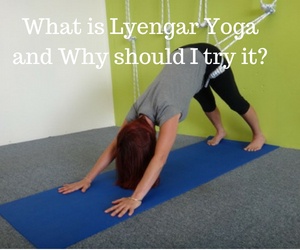What is Lyengar Yoga and Why should I try it?
Disclosure: As an Amazon Associate I earn from qualifying purchases. This page may contain affiliate links, which means I may receive a commission if you click a link and purchase something that I have recommended. There is never an additional cost to you.
What is Lyengar Yoga and Why should I try it?
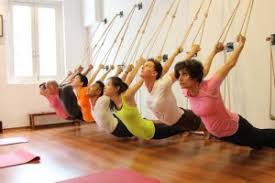
Lyengar Yoga is the practice of precision. By paying close attention to anatomical details and the alignment of each posture. Poses are held for long periods and often modified with props. This method is designed to systematically cultivate strength, stability, flexibility and awareness, and can be therapeutic for specific conditions.
Lyengar Yoga may not offer as intense a cardiovascular experience as, for example, a Vinyasa Flow or Ashtanga practice, but it’s great for intermediate and advanced students alike. Holding the poses for longer helps to develop strength and increase flexibility, as well as encourage a deeper connection to the breath and overall concentration.
What are the health benefits of Lyengar Yoga?

A regular Lyengar practice will help to:
- Increased physical and psychological health
- Alleviate postural problems
- Release tension emotionally
- Increased concentration and focus
- Increased energy
- Connection between your breath and your body
- Bring intelligence, wisdom and clarity to all parts of the body and mind.
Who Invented Lyengar Yoga?
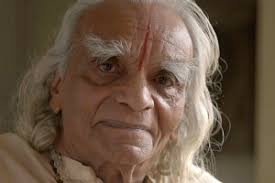
Yogacharya Sri B.K.S Lyengar was born on December 14, 1918, in Bellur, India, he studied and practised yoga continuously for over 85 years. He began his study of yoga at a young age with his guru, T. Krishnamacharya (who’s often referred to as ‘The Father of Modern Yoga’).
B.K.S Lyengar brought yoga to the west in the 70s and his book ‘Light on Yoga’ has been the source book for generations of yoga students all over the world. He was a yoga teacher for over 75 years in all five continents, making yoga accessible and relevant to people everywhere. He invented many of the yoga props that we use today and explored the benefits of yoga as treatment for a range of serious medical conditions.
The man that many would call “the world’s greatest yoga teacher” died at the age of 95 on August 20, 2014.
What can i Expect at a Lyengar Yoga Class?
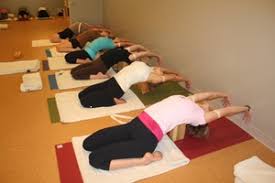
In an Lyengar yoga class, the way in which postures are taught is the same worldwide. Each teacher will select a series of postures for a specific class for a specific reason, but each posture will be exactly the same in essence, whoever the teacher and wherever in the world you are. That means you can walk into any Lyengar class and fit in immediately.
In a Lyengar yoga class for beginners, you will focus on standing postures so that you can learn the fundamentals of how to adjust and align the body correctly. Standing poses form the foundation before moving on to more advanced postures and need to be studied intensively, even when you’ve mastered the most advanced poses.
Teachers of Lyengar all undergo a comprehensive training to ensure that you get the knowledgeable instruction that you need. A fully qualified Lyengar teacher will always hold a current Lyengar Yoga Certification Mark.
You can therefore expect an Lyengar yoga class to include an excellence of technique and sequencing, moving through a safe, methodical progression of yoga postures. The well-qualified teacher will provide a clear demonstration and explanation and iindividual correction and adjustment when necessary.
The whole experience is quite different than say, Power Yoga- See our Power Yoga blog here – What is Power Yoga?
What makes it different from traditional yoga?
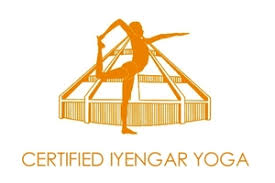
Iyengar Yoga focuses on three aspects: alignment, timing and sequencing.
- Alignment meaning one maintains the pose while respecting the body’s boundaries. The use of props are encouraged to assist students into an asana without putting them at risk of injury. Effective alignment can then help to achieve balance between body, breath and mind.
- Timing: unlike Vinyasa yoga, lyengar poses are held for longer periods of time. When stability has been achieved in a pose, it’s then possible to safely intensify the depth of the posture. This ultimately helps to help develop strength and flexibility, along with sensitivity and awareness between the body and mind.
- Sequence refers to the order that the postures are practised in to enable a safe and structured progression of the poses, along with the ‘opening’ and balance of the physical and emotional body.
Can Lyengar Yoga Help Alleviate Medical Conditions?
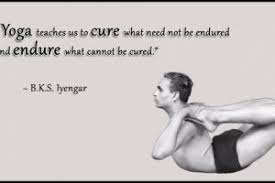
Mr. Lyengar died age 95, many say this is testament enough to whether Lyengar Yoga can help alleviate medical conditions. But he also achieved remarkable success in the treatment of a wide range of medical conditions, ranging from skeleto-muscular through to emotional. He has passed much of this knowledge on to his Intermediate Junior and Senior teachers. They are qualified to give help in cases where they have competence.
Note: only teachers who hold Intermediate Junior and Senior qualifications and who have the necessary experience can give help with serious conditions.
Why does Lyengar Yoga use so many props?
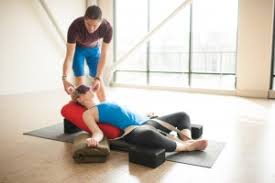
Lyengar yoga uses a lot of props. Props will always be available in an Iyengar yoga class but will not always be necessary. They are not there to complicate the practice but to simplify it and make it accessible to all. In a beginners’ class, it is always good to be guided by the teacher when it comes to props. An experienced teacher is able to advise each individual about how and when to use props.
Is Lyengar Yoga Philosophical at all?
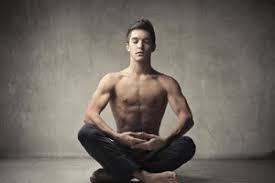
Some yoga writers and practitioners have split yoga into raja yoga, jnana yoga, bhakti yoga and hatha yoga. They consider each to be separate schools of practice. Mr. Lyengar followed the teaching of Patanjali in that he considered raja, jnana, bhakti and hatha to be constituent parts of the whole practise of yoga, not to be practised individually.
The second chapter of the Yoga Sutras begins with a definition of Kriya Yoga, the yoga of action, which has three tiers, tapas (self-discipline), svadhayaya (self-study), Isvara pranidhana (surrender to God). Kriya Yoga includes the three great paths of yoga: karma marga (the path of action), jnana marga (the path of knowledge), bhakti marga (the path of devotion).
Those of us who practice Iyengar Yoga practice Kriya Yoga. Mr. Iyengar described his yoga as Patanjali Yoga, however it is commonly known as Lyengar Yoga, giving credit to his teaching and example.
